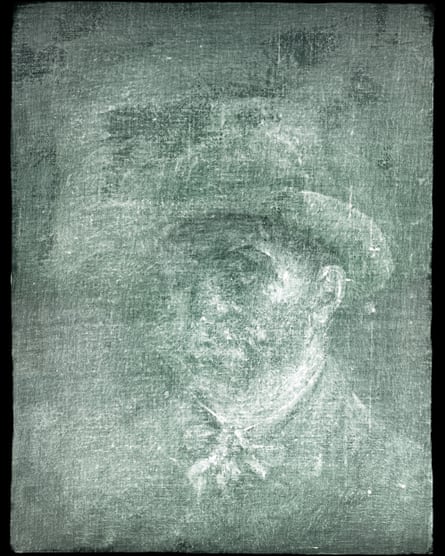It was on a Friday afternoon that they found him, staring intently from the back of a canvas in a wide-brimmed hat and loose neckerchief: a previously undiscovered self-portrait of Vincent van Gogh, one of the most popular and influential figures in western art history, which had been hiding in plain sight in the collection of the National Galleries of Scotland for more than half a century.
“It was absolutely thrilling,” says Lesley Stevenson, senior paintings conservator at the National Galleries of Scotland, of the moment that a routine conservation X-ray of another Van Gogh painting, Head of a Peasant Woman, revealed this extraordinary find on the back of the canvas, hidden for more than 100 years beneath layers of glue and cardboard.

“We weren’t expecting much,” says Stevenson of the “modest little painting” that was donated in 1960 by an Edinburgh lawyer, Alexander Maitland. It was being X-rayed as part of a cataloguing exercise and in preparation for the Royal Scottish Academy’s summer exhibition of French impressionism – although Van Gogh was Dutch, he spent much of his artistic career in France.
The X-ray plates were processed in an old-fashioned darkroom, and when Stevenson looked at the images she realised she was staring at the face of Van Gogh himself.
“Lo and behold! We don’t see much of the peasant woman, but what we have is the lead white, the much heavier pigment he used for his face, showing up after the X-ray goes through the cardboard.”
Further research suggests that the painting is one of a series of experimental self-portraits – there are five similar works, displayed at the Van Gogh Museum in the Netherlands – painted on the back of earlier canvases from his time living in Nuenen, in the south of the country, from December 1883 to November 1885. There he undertook a number of peasant studies in preparation for his early masterpiece The Potato Eaters, painted in 1885.
Frances Fowle, the senior curator for French art, said that the discovery – thought to be a first for any UK institution – added to our understanding of a crucial period in Van Gogh’s artistic development, when he first encountered the work of the French impressionists after moving to Paris in 1886, where he was supported by his brother Theo and met avant-garde artists like Henri de Toulouse-Lautrec and Émile Bernard.
Inspired by the likes of Georges Seurat and Paul Gauguin, he adopted a more colourful and expressive style of painting, experimenting with broken brushwork for the first time, using himself as a model and re-using canvases to save money.
Fowle said: “This period when he began producing self-portraits was key in the development of his mature style, when he began experimenting with his own distinctive brush stroke. Van Gogh was a very independent thinker and he developed his radical new style so quickly.”
Now conservators will begin the process of revealing the self-portrait, which is in an uncertain condition beneath layers of adhesive and cardboard, while preserving the original painting. “It’s like stepping into the unknown,” Stevenson said. “The challenge will be removing the adhesive from the oil paint layers, exploiting the difference in solubility of animal-based glue and oil-based paint.”
In a typical year, the Van Gogh Museum in Amsterdam takes up to 300 inquiries from people believing they have discovered a lost Van Gogh, but very few are found to be legitimate. In 2013, the landscape Sunset at Montmajour, painted two years before his death in 1890 and forgotten in a Norwegian attic, went on display in Amsterdam, while last year a pencil sketch of an exhausted labourer, Worn Out, was exhibited after sitting unattributed in a Dutch family’s private collection for more than a century.
“The discovery of a new work is extraordinary,” says Stevenson. “Anything that gives us more information about the artist is a huge bonus, and just shows the benefit of technological analysis, that we can still find out new things.”
A Taste for Impressionism: Modern French Art from Millet to Matisse is at the Royal Scottish Academy in Edinburgh from 30 July to 13 November.








